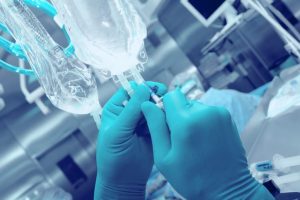Posted December 20, 2018 in Blog

Patients considering cosmetic surgery often express a great deal of concern for post-operative pain that can delay or even prevent potential patients from proceeding with surgery. Pain control is a
significant challenge for all surgeons. As a cosmetic surgeon, dealing with patients who undergo elective surgery, I want my patients to have the best experience possible. A big part of having a good experience is minimizing pain and getting people back to their normal activities as soon as possible.
Traditional post-operative pain control has centered on the use of narcotic pain medication. But there are many negative effects of this type of medication that may set patients back rather than speed their recovery. Common side effects of narcotic (or opioid) medications include nausea and vomiting, itching, lethargy and urinary retention to name a few. Addiction is a potential risk, but short-term use that is typical with cosmetic surgical procedures makes this risk minimal.
More recent concepts of pain control following surgery have placed opioids in a secondary role in favor of using a variety of medications and techniques to attack pain at different points along the “pain pathways” from the site of the surgery to the spinal cord to the brain using non-narcotic medications. This has been termed multi-modal analgesia. There are a variety of medications used; some whose common use isn’t pain control at all. Combining this pain control with nausea prevention are the fundamentals of a concept called Enhanced Recovery Programs.
While there are wide variations, multimodal analgesia looks something like this: some oral medications such as Gabapentin (an anti-seizure medication also used for pain) and Celebrex (an anti-inflammatory) may be started a day or more before surgery. The anesthesiologist may give a variety of anti-nausea drugs before and during surgery. They may also put various medications in your IV early in surgery such as a low dose of a steroid that has been shown to have long lasting effects on pain. During surgery, long acting local anesthetic is injected into the tissues at the surgical site and nerve blocks may also be done. Exparil is a new long acting local anesthetic that may be effective for up to 3 days. Unfortunately, it is fairly expensive.
After surgery, we have found Celebrex to be a game changer in pain control. I give it twice a day for two to four weeks after surgery and have seen a remarkable decrease in post-op pain and quicker recovery. In some procedures like tummy tuck, compressive binders or garments can be very helpful at not only controlling swelling, but also giving support and decreasing pain as the patient becomes more active.
This is only one example, but many other drugs are being evaluated. Post-operative pain control has come a long way when we look at it in a completely different way. This is just one way we try to make the surgical experience better at North Dallas Plastic Surgery.
